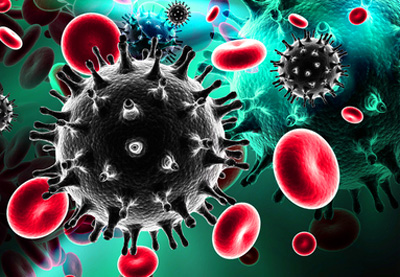TSRI scientists use trait of anti-HIV antibodies to develop vaccine candidates
Posted: 18 November 2015 | Victoria White
When studying prototype antibodies that target a specific weak spot on HIV, the researchers noted two of the antibodies had an unusual feature that could prove important in vaccine design…


Scientists at The Scripps Research Institute (TSRI) have described four prototype antibodies that target a specific weak spot on HIV in a new study.
Guided by these antibodies, the researchers then mimicked the molecular structure of a protein on HIV when designing their own potential HIV vaccine candidate.
“This study is an example of how we can learn from natural infection and translate that information into vaccine development,” said TSRI Research Associate Raiees Andrabi. “This is an important advance in the field of antibody-based HIV vaccine development.”
The findings build on the success of several recent TSRI studies showing that, with prompting, the immune system can develop antibodies to neutralise many strains of HIV.
In the new study, the researchers carried out a series of experiments involving virus modifications, protein and antibody engineering. They found that four antibodies targeted a single spot on HIV’s surface called the V2 apex. This was significant because the V2 apex could be recognised by these antibodies on about 90% of known HIV strains—and even related strains that infect other species. A vaccine targeting this region could protect against many forms of the virus.
“This region helps stabilise the virus, so it’s an important area to target if you want to neutralize HIV,” said Andrabi.
Researchers mimicked the native HIV coat protein
Investigating further, the researchers noticed that two of the four antibodies had an unusual feature that could prove important in vaccine design.
The immune system usually begins its fight against infection by activating immune B cells that express “germline” forms of antibodies, on their surface, to bind invading pathogens. Germline antibodies rarely bind viruses very effectively themselves; instead, they are precursors for more developed antibodies, which mutate and hone their response to the invader. Yet in the new study, two of the antibodies did not need to mutate to bind with the V2 apex; instead, these antibodies used part of their basic germline structure, encoded by non-mutated genes. This means any patient with HIV should, in theory, have the ability to kick-start the right immune response.
Unfortunately, the immune system seems to naturally produce only a small number of these HIV-neutralising germline antibodies. To generate an immune response that would favour these antibodies, it was critical for the scientists to find the right proteins in HIV that the antibodies could recognise and bind to. The researchers succeeded in mimicking a structure on HIV called the native HIV coat protein. This let them design proteins that do indeed bind well to the germline antibodies and hopefully start a useful immune response. The next step will be to test the vaccine candidates in animal models.
Related conditions
HIV
Related organisations
The Scripps Research Institute (TSRI)



